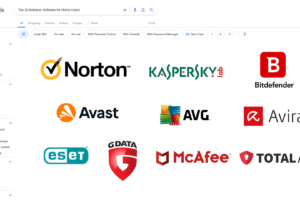In the digital age, cyber threats and malware pose significant risks to individuals, businesses, and even entire nations. As one of the world’s largest technology companies, Google shoulders a substantial responsibility in combating these threats. From its vast search engine to its cloud services, Google operates in an environment rife with potential vulnerabilities. However, the company has implemented a robust arsenal of tools and strategies to fight against cyber threats and malware. This article explores how Google tackles these challenges, from its internal defenses to its contributions to the broader cybersecurity landscape.
The Scope of the Problem
Cyber threats encompass a wide range of malicious activities, from phishing attacks and ransomware to botnets and distributed denial-of-service (DDoS) attacks. Malware, short for malicious software, refers to any program or code designed to harm, exploit, or compromise a system. These threats are not just nuisances—they can result in stolen data, financial losses, and reputational damage. For Google, the stakes are particularly high, given its role as a gatekeeper of information and a provider of critical services.
Google faces cyber threats on multiple fronts. Its search engine alone processes billions of queries daily, making it a prime target for attackers seeking to manipulate results or spread harmful content. Similarly, its cloud services host vast amounts of sensitive data, from personal photos to corporate secrets. Protecting this infrastructure requires a layered approach, combining technical expertise, strategic foresight, and collaboration with external partners.
Google’s Internal Defenses: A Multi-Layered Approach
Google’s fight against cyber threats begins within its own walls. The company employs a multi-layered defense strategy to safeguard its systems and users. Here’s a closer look at how it achieves this:
Advanced Threat Detection Systems
Google invests heavily in advanced threat detection systems, leveraging machine learning and artificial intelligence (AI) to identify and neutralize threats in real time. These systems analyze vast amounts of data to detect anomalies, such as unusual login patterns or suspicious activity. For instance, Google’s Safe Browsing service continuously monitors URLs for signs of phishing or malware distribution. If a site is flagged, users are warned before they navigate to it.
One of Google’s most impressive tools is its machine-learning-based threat detection system, which learns from past incidents to predict future threats. This proactive approach allows Google to stay ahead of attackers, reducing the window of opportunity for exploitation.
Zero Trust Architecture
Zero trust architecture is a cornerstone of Google’s security strategy. This model assumes that no user or device should be trusted by default, regardless of its location. Every access request is authenticated and authorized based on context, such as the user’s identity, device, and location. This approach minimizes the risk of lateral movement by attackers and ensures that even compromised accounts cannot access sensitive resources.
Google’s internal networks are segmented into micro-perimeters, each with its own access controls. This segmentation prevents attackers from gaining unrestricted access to the entire system, even if they breach one layer.
Encryption and Authentication
Encryption and authentication are fundamental to Google’s security posture. All data transmitted between Google’s servers and users is encrypted using industry-standard protocols like TLS (Transport Layer Security). This ensures that sensitive information remains protected during transit. Additionally, Google enforces strict password policies and encourages users to adopt multi-factor authentication (MFA), adding an extra layer of security to their accounts.
Incident Response and Recovery
Even with the best defenses, breaches can occur. Google’s incident response team is equipped to handle these situations swiftly and effectively. The team follows a structured process for detecting, analyzing, and mitigating threats. Once a breach is identified, Google isolates affected systems, investigates the root cause, and implements countermeasures to prevent recurrence. The company also maintains robust backup and recovery systems to ensure minimal downtime and data loss.
Google’s External Contributions: Protecting the Web
While Google’s internal defenses are crucial, the company also plays a vital role in protecting the broader web. Through partnerships, research, and open-source initiatives, Google contributes to the global fight against cyber threats and malware.
Safe Browsing Initiative
Google’s Safe Browsing initiative is one of its most visible efforts to combat cyber threats. This service provides real-time protection to millions of users by identifying and blocking malicious websites, phishing attempts, and known malware distributions. When a user navigates to a flagged site, they are alerted with a warning message. Safe Browsing data is shared across Google’s ecosystem, ensuring that all users benefit from the collective intelligence.
Project Zero
Project Zero is Google’s elite team dedicated to eliminating zero-day vulnerabilities in software. These vulnerabilities are particularly dangerous because they are unknown to developers and patch-free, allowing attackers to exploit them before fixes are available. Project Zero discovers and reports these vulnerabilities to vendors, often earning public recognition for its contributions to the security community.
Threat Analysis Group (TAG)
Google’s Threat Analysis Group (TAG) is another critical component of its external efforts. TAG specializes in identifying and disrupting cybercriminal operations, including state-sponsored actors and organized crime groups. By sharing intelligence with law enforcement agencies and other organizations, TAG helps dismantle malicious networks and protect users worldwide.
Open Source Contributions
Google actively contributes to the open-source community, releasing tools and frameworks that enhance cybersecurity. For example, the TensorFlow library for machine learning has been adapted for threat detection, while the OSS-Fuzz project helps identify vulnerabilities in open-source software. These contributions empower developers to build more secure applications and strengthen the overall resilience of the internet.
The Role of User Education
No defense is foolproof, and user education plays a critical role in mitigating cyber threats. Google recognizes this and invests in initiatives to educate its users about best practices. Here are some key efforts:
Gmail Phishing Protection
Gmail’s phishing protection is a prime example of how Google educates users. The service warns users when they attempt to click on potentially harmful links, providing guidance on how to recognize phishing attempts. Additionally, Google provides resources on its website, offering tips on creating strong passwords, enabling MFA, and spotting suspicious emails.
Chrome Security Indicators
Google Chrome incorporates security indicators directly into its browser interface. Green locks indicate secure connections, while warnings alert users to insecure sites. These visual cues help users make informed decisions about their online activities.
Security Awareness Campaigns
Google runs periodic security awareness campaigns to remind users about the importance of cybersecurity. These campaigns cover topics such as updating software, backing up data, and avoiding public Wi-Fi for sensitive transactions. By reinforcing these messages, Google helps users stay vigilant and prepared.
The Future: Emerging Trends in Cybersecurity
As cyber threats evolve, so too must Google’s strategies. Here are some emerging trends shaping the future of cybersecurity:
Quantum Computing and Cryptography
Quantum computing poses both a threat and an opportunity for cryptography. While quantum computers could break current encryption algorithms, they also offer the potential for stronger cryptographic methods. Google is exploring post-quantum cryptography to ensure long-term security for its systems.
Artificial Intelligence and Automation
AI and automation are transforming threat detection and response. Machine learning models can analyze vast amounts of data to identify patterns and predict future threats. Google is leveraging these technologies to enhance its threat intelligence capabilities and automate routine tasks.
Zero Trust Expansion
Zero trust architecture is expanding beyond traditional IT systems to include IoT devices, cloud services, and mobile apps. As more endpoints connect to the internet, securing them becomes increasingly complex. Google is working on solutions to extend zero trust principles to these emerging domains.
Conclusion: A Collective Effort
Google’s fight against cyber threats and malware is a testament to its commitment to user safety and privacy. Through advanced threat detection systems, zero trust architecture, and extensive external contributions, the company demonstrates its dedication to protecting the digital ecosystem. However, no single entity can shoulder this burden alone. Cybersecurity is a collective effort, requiring collaboration between governments, organizations, and individuals.
For users, staying informed and adopting best practices is essential. Regularly updating software, enabling MFA, and being cautious online can significantly reduce the risk of falling victim to cyber threats. For businesses, investing in robust security measures and fostering a culture of security awareness is crucial for long-term success.
As technology continues to evolve, so too must our strategies for combating cyber threats. Google’s leadership in this space provides a roadmap for others to follow, inspiring confidence in a safer digital future.
















Add Comment